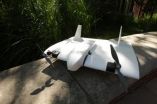(Press-News.org) MADISON — Hundreds of millions of daily posts on the social networking service Twitter are providing a new window into bullying — a tough nut to crack for researchers.
"Kids are pretty savvy about keeping bullying outside of adult supervision, and bullying victims are very reluctant to tell adults about it happening to them for a host of reasons," says Amy Bellmore, a University of Wisconsin–Madison educational psychology professor. "They don't want to look like a tattletale, or they think an adult might not do anything about it."
Yet typical bullying research methods rely on the kids — victims and bullies alike — to describe their experiences in self-reporting surveys.
"For a standard study we may get access to students from one grade in one school," Bellmore says. "And then we get a one-time shot at it. We get one data collection point in a school year from these kids. It's very labor- and time-intensive."
Time and labor doesn't mean much to a computer, though, and Bellmore and graduate students Junming Sui and Kwang-Sung Jun have been helping Jerry Zhu, a UW–Madison computer sciences professor who studies machine learning, teach computers to scour the endless feed of posts on Twitter for mentions of bullying events.
"What we found, very importantly, was that quite often the victim and the bully and even bystanders talk about a real-world bullying incident on social media," Zhu says. "The computers are seeing the aftermath, the discussion of a real-world bullying episode."
Zhu fed the Twitter-monitoring computer two sets of tweets hand-selected by Bellmore's research group.
"The computer gets a set about bullying and a set definitely not about bullying," Zhu says. "In machine learning, the algorithm reads each tweet as a short text document, and it goes about analyzing the word usage to find the important words that mark bullying events."
Sufficiently trained, the computer went to work on samples of the 250 million publicly visible messages posted on Twitter on a daily basis. It wasn't long before the machine learning approach was identifying more than 15,000 bullying-related tweets per day. The traffic ebbs and flows on a weekly schedule — more active Monday through Thursday, presumably because the school-aged subjects see less of each other on the weekends.
Volume isn't the machine learning computer's only advantage over traditional research methods. As Bellmore and Zhu stepped up its training, the computer developed an eye for the roles played by the Twitter users wrapped up in bullying events.
"We taught it ways to identify bullies, victims, accusers and defenders," Bellmore says.
As the researchers dug into the tweets selected by the computer, they identified a new role: the reporter.
"The other roles were identified in the early '90s in the bullying literature," Bellmore says. "But the reporter role is new. It's just like it sounds, a child who witnessed or found out about, but wasn't participating in, a bullying encounter. That role emerged out of studying the social media roles."
Data from social media has also thrown in the progression of time, a variable often left beyond the reach of student surveys. Bellmore and Zhu hope to follow groups of individual users through multiple bullying experiences.
"Paper surveys are not as dynamic as the social media tracks," Zhu says. "You just get one snapshot in time. You don't see the evolution of bullying events. You don't see the relationships evolving."
While the researchers are collecting data largely disconnected from the individual users, the machine learning technique could be used to identify children in need of an intervention.
"We want to add sentiment analysis, an assessment of the emotion behind a social media message, to our program," Zhu says. "The idea is that if someone is powerfully affected by the event, if they are feeling extreme anger or sadness, that's when they could be a danger to themselves or others. Those are the ones that would need immediate attention."
Using the data to show the bullied that they are not alone — the researchers have considered mapping social media mentions of bullying events — could also help children deal with their feelings.
"A way victims often make sense of their bullying is by internalizing it. They decide that there's something bad about themselves — not that these other people are jerks," Bellmore says. "When they're exposed to the idea that other people are bullied, actually it has some benefit. It doesn't completely eliminate the depression or humiliation or embarrassment they might be feeling, but it can decrease it."
New insights will help the researchers supply policy-makers with a better understanding of bullying issues, Bellmore and Zhu say, which may result in more effective prevention methods.
Future work may include tapping other social media sites. For example, China's Weibo service claims 300 million users — maybe twice Twitter's count. Other services, like Facebook, may be even richer data sources.
INFORMATION:
The group's work was presented at the North American Chapter of the Association for Computational Linguistics conference this summer, and is on the agenda at a Beijing sentiment analysis workshop in August.
Park Ridge, Ill. (August 1, 2012) – New research from Cornell University indicates that pregnant women who increase choline intake in the third trimester of pregnancy may reduce the risk of the baby developing metabolic and chronic stress-related diseases like high blood pressure and diabetes later in life.(i) The results, published in the latest edition of the Journal of the Federation of American Societies for Experimental Biology, suggest that choline, a nutrient found in high quantities in eggs, may help protect against the effects of a mother's stress during pregnancy. ...
Neighbors' lawn signs, public opinion polls and even a conversation in the next restaurant booth can affect how people vote in an election. But it all depends on how far away the election is.
In a new research article published in Psychological Science, a journal of the Association for Psychological Science, scientists Alison Ledgerwood and Shannon Callahan of the University of California, Davis conducted two different studies examining the relationship between abstract thinking and group norms people's support for different policies.
In the first study, they asked ...
EAST LANSING, Mich. — It's relatively easy to collect massive amounts of data on microbes. But the files are so large that it takes days to simply transmit them to other researchers and months to analyze once they are received.
Researchers at Michigan State University have developed a new computational technique, featured in the current issue of the Proceedings of the National Academy of Sciences, that relieves the logjam that these "big data" issues create.
Microbial communities living in soil or the ocean are quite complicated. Their genomic data is easy enough to ...
WEST LAFAYETTE, Ind. - If the drought forces producers to feed a larger portion of distillers dried grains with solubles, cattle can maintain gains and improve meat quality if the animals are weaned early, a Purdue University scientist has shown.
The finding, reported at the American Society of Animal Science Midwest Meetings in Des Moines, Iowa, could allow some producers to save on rising feed costs in the face of this year's drought. Distillers dried grains with solubles, or DDGS, are the leftovers from corn ethanol production. DDGS generally cost about 10 percent ...
When it comes to intelligence, what factors distinguish the brains of the exceptionally smart from those of average humans?
As science has long suspected, overall brain size matters somewhat, accounting for about 6.7 percent of individual variation in intelligence. More recent research has pinpointed the brain's lateral prefrontal cortex, a region just behind the temple, as a critical hub for high-level mental processing, with activity levels there predicting another 5 percent of variation in individual intelligence.
Now, new research from Washington University in St. ...
COLUMBIA, Mo. – Infants innately relieve stress by crying, turning their heads or maintaining eye contact. Adults manage emotional tension using problem-solving or by seeking support. A new study by a University of Missouri human development expert describes how adolescents' developing personalities and coping habits affect their behaviors toward others.
"We're each born with some personality tendencies; for example, we see that babies are fussy or calm," said Gustavo Carlo, the Millsap Professor of Diversity in the MU Department of Human Development and Family Studies. ...
A team of researchers has developed a cheap, rechargeable and eco-friendly battery that could be used to store energy at solar power plants for a rainy day.
Led by Sri Narayan, professor of chemistry at the USC Dornsife College of Letters, Arts and Sciences, the team developed an air-breathing battery that uses the chemical energy generated by the oxidation of iron plates that are exposed to the oxygen in the air – a process similar to rusting.
"Iron is cheap and air is free," Narayan said. "It's the future." Details about the battery will be published July 20 in the ...
New York, NY and Oxford, UK, August 1, 2012 – The body has a built-in system known as autophagy, or 'self-eating,' that controls how cells live or die. Deregulation of autophagy is linked to the development of human diseases, including neural degeneration and cancer.
In a study published online this week in the Proceedings of the National Academy of Sciences, scientists at the Ludwig Institute for Cancer Research in Oxford discovered a critical molecular switch that regulates autophagy. They also studied the links between autophagy and a cellular process called senescence ...
Archaeological sites that currently take years to map will be completed in minutes if tests underway in Peru of a new system being developed at Vanderbilt University go well.
The Aurora Flight Sciences unmanned aerial vehicle will be integrated into a larger system that combines the flying device that can fit into a backpack with a software system that can discern an optimal flight pattern and transform the resulting data into three-dimensional maps. The project is an interdisciplinary collaboration between Vanderbilt archaeologist Steven Wernke and engineering professor ...
A pilot study in adolescents and adults has found that an investigational drug shows promise as the first potential medical treatment for children with the severest type of congenital hyperinsulinism, a rare but potentially devastating disease in which gene mutations cause insulin levels to become dangerously high.
"There is currently no effective medicine for children with the most common and most severe form of hyperinsulinism," said study leader Diva D. De Leon, M.D., a pediatric endocrinologist at The Children's Hospital of Philadelphia. "Our new research shows that ...


